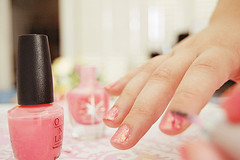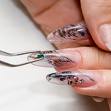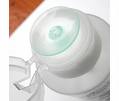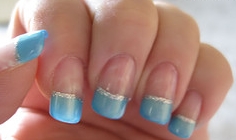Nail Polish

The Birth Of Nail Polish:
You can thank Henry Ford and his automobiles for the developement of nail polish. After World War I, there was a large supply of leftover nitrocellulose, which had been used for military explosives. By trial and error, a brave soldier experimenting with the material discovered that boiling the nitrocellulose causes it to become soluble in organic solvents. When these solvents evaporate, the resulting material is a glossy, hard lacquer. Around 1920, the automobile industry became interested in developing this unique lacquer process for painting new, assembly-line cars. Nitrocellulose lacquer was the paint of choice for Fords. Not long afterward, the beauty industry refined the lacquer formula by adding softening resins as the basis for nail polish.
A recent (ca. 2003) development is water-based nail polish, which is based on an acrylic polymer emulsion (e.g. styrene-acrylate copolymer), and pigments similar to those used in watercolor paints. This is touted as a more environmentally-conscious product, since nail polish is considered a hazardous waste by some regulatory bodies (e.g. Los Angeles Department of Public Works). In this application, the solvent (water) does not completely evaporate as in the case of the traditional nail polish; part of the water is absorbed thru the fingernail.

Nail Polishes In Vogue:
Traditional colors for nail polish are red, all types of pink and flesh-colored shades, although more unusual shades are also available, such as yellow, orange, black and even green. French manicures traditionally mimic the colors of natural nails, with flesh tones on most of the nail and white at the tips. Today, nail polish can be found in nearly every color and shade desired. Dark blues, purples and greens are popular with teenagers now a days. French manicures will always be in style. But clear and sheer colors are out of today’s fashion! Also in today’s world some popular designs are painted on one nail (usually the ring finger) and can be done with thinner nail brushes including: flowers, strokes of lines and even more detailed designs with airbrush tools usually on acrylic nails.

Nail Polish Remover: Nail polish is easily removed with nail polish remover, which is basically an organic solvent but may also include oils, scents and coloring. Nail polish remover comes in a variety of different packages including individual felt pads soaked in remover, a bottle of liquid remover that can be used with a cotton ball and even containers filled with foam and remover that can be used by inserting a finger into the container and twisting until the polish comes off. The base solvent in nail polish remover is usually acetone or ethyl acetate. Acetonitrile has also been used in the past, but is more toxic: two cases have been reported of accidental poisoning of young children by acetonitrile-based nail polish remover, one of which was fatal. Acetonitrile has been banned in cosmetics (including nail polish removers) in the European Economic Area since 2000-03-17. The remover used with water-based polish is a plant-derived emulsion, and is considered non-toxic and non-hazardous-waste.

Allergy To Nail Polish: Allergic reactions to nail polish may surface first on your eyelids, if after applying a new nail polish your eyelids become red and swollen, this is your clue. Because eyelid skin is so delicate, it is particularly susceptible to contact dermatitis. (This means your nails or hands have rubbed your eyes.)